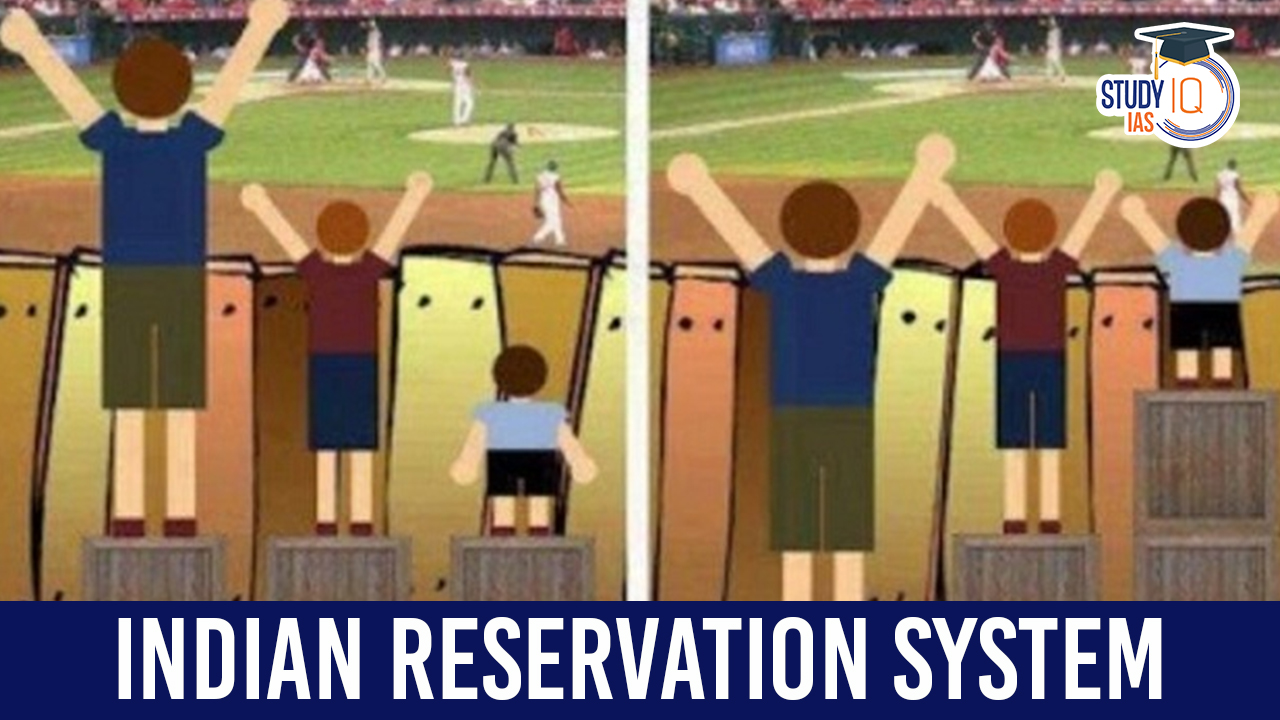
India's reservation system, rooted in the country's age-old caste system, aims to provide equitable access to government jobs, educational institutions, and legislatures.
Published On February 22nd, 2024

Table of Contents
India’s reservation system, rooted in the country’s age-old caste system, aims to provide equitable access to government jobs, educational institutions, and legislatures for historically disadvantaged sections of the population. Originating as a means of addressing historical injustices based on caste identity, the reservation system operates as a quota-based affirmative action, often referred to as positive discrimination. Governed by government policies backed by the Indian Constitution, it has undergone significant evolution over the years.
The idea of caste-based reservations was initially conceived by William Hunter and Jyotirao Phule in 1882. However, it was formalized in 1933 with the introduction of the “Communal Award” by British Prime Minister Ramsay Macdonald, which provided separate electorates for various religious and caste groups, including Dalits. Post-independence, the reservation system initially focused on Scheduled Castes (SCs) and Scheduled Tribes (STs) but expanded to include Other Backward Classes (OBCs) in 1991 based on the recommendations of the Mandal Commission.
| Year | Event |
| 1882 | William Hunter and Jyotirao Phule conceive the idea of caste-based reservation system. |
| 1933 | British Prime Minister Ramsay Macdonald introduces the “Communal Award,” providing separate electorates for various religious and caste groups, including Dalits. |
| Post-Independence | Initially, reservations are provided only for Scheduled Castes (SCs) and Scheduled Tribes (STs). |
| 1991 | Other Backward Classes (OBCs) included in reservation ambit based on Mandal Commission recommendations. |
| 1978 | Mandal Commission appointed to define socially and educationally backward classes and recommend steps for their advancement. |
| 1980s | Mandal Commission concludes that approximately 52% of India’s population consists of OBCs, recommending 27% reservation in government jobs for them. |
| Constitutional Amendments | 77th, 81st, and 85th Amendments introduce provisions for reservation in promotions, consequential seniority, and unfilled vacancies for SCs/STs. |
| Supreme Court Verdicts | Landmark cases such as State of Madras v. Smt. Champakam Dorairajan and Indra Sawhney v. Union of India shape the scope and extent of reservation policies. |
| Recent Developments | Constitutional (103rd Amendment) Act of 2019 provides 10% reservation in government jobs and educational institutions for economically backward individuals in the unreserved category. |
| Present | India’s reservation system continues to evolve, facing scrutiny, criticism, and demands for reform amid socio-economic challenges and changing political landscapes. |
Several landmark Supreme Court cases, including the State of Madras v. Smt. Champakam Dorairajan and Indra Sawhney v. Union of India, have shaped the scope and extent of reservation policies. The Supreme Court upheld the 27% quota for OBCs while introducing the concept of the “creamy layer” and imposing a 50% cap on total reservation. Subsequent judgments clarified the exclusion of the creamy layer from reservation benefits and emphasized the need for data on backwardness.
The reservation system in India has been a subject of intense debate and scrutiny, eliciting both support and criticism from various segments of society. A critical analysis of India’s reservation system reveals several key points:
| Pros of Indian Reservation System | Cons of Indian Reservation System |
| Addressing Historical Injustice: Provides opportunities for SCs, STs, and OBCs, rectifying centuries-old discrimination and oppression. | Compromising Meritocracy: Prioritizes caste-based quotas over merit-based selection, potentially compromising the quality and efficiency of institutions. |
| Promoting Social Inclusion: Fosters social cohesion and diversity by ensuring representation of marginalized groups in various sectors. | Perpetuating Caste Divisions: May inadvertently reinforce caste divisions in society, hindering efforts towards building a more egalitarian society. |
| Ensuring Equal Opportunities: Levels the playing field, enabling individuals from marginalized backgrounds to compete on merit. | Creamy Layer and Inefficiency: Criticized for inefficiency and lack of transparency in targeting the most disadvantaged individuals within reserved categories. |
| Encouraging Diversity and Representation: Enriches decision-making processes with a range of perspectives and experiences. | Resentment and Division: Can fuel resentment and animosity among different social groups, leading to tensions and conflicts. |
| Empowering Marginalized Communities: Boosts self-esteem, confidence, and socio-economic status of marginalized groups. | Administrative Challenges: Faces difficulties in implementation, identification of beneficiaries, and prevention of misuse. |